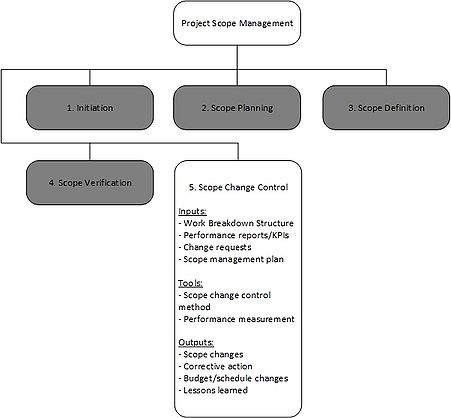Project Scope Control
Contents |
Abstract
As the project scope continuously develops, it is essential that projects have a clear scope management process, which defines how scope is to be defined, developed and managed. This is the process of monitoring the status of the project and product scope and managing changes to the scope baseline. The key benefit of this process is that it allows the scope baseline to be maintained throughout the project. This process captures changes in the project's budget and schedule. Project scope is defined as the "work required to output a project’s deliverable."[1] A Scope Change is a change in the agreed scope and goals of a project to address a need not originally defined to be part of the project. This includes processes for requesting, reviewing, approving, carrying out and controlling changes to the project's deliverables. The main stakeholders involved in Scope Change Control include, the proposer of the change, Work Package Owner (WPO) and potentially a second approver, which could for example be the Project Director.[2] This article focuses on the method of applying Scope Change Control, based on industry best practices through structured interviews with Project Managers and Engineering Managers. For the sake of clarity, this method is applied to construction projects within the pharmaceutical industry.
Background
According to the PMBOK® Guide, a body of project management standards and guidelines, the purpose of Project Scope Management is to ensure that the outcomes of a project are successfully achieved by only including all the necessary work to complete. Unnecessary work is considered out of scope.
Figure 1 gives an overview of Project Scope Management. It includes five process:
- Initiation: Engaging and committing the organization or project office to start the project
- Scope Planning: Developing a scope statement that set the course for future decision making
- Scope Definition: Breaking down major deliverables into manageable sizes, also known as Work Breakdown Structures (WBS) to be executed by the Project Team
- Scope Verification: Verifying or accepting the scope statement
- Scope Change Control: Controlling changes to the project scope
Application
limitation
References
- ↑ https://www.pmi.org/learning/featured-topics/scope Project Management Institute. Retrieved 18 September 2017.
- ↑ Meeting with Project Managers within the pharmaceutical industry.
